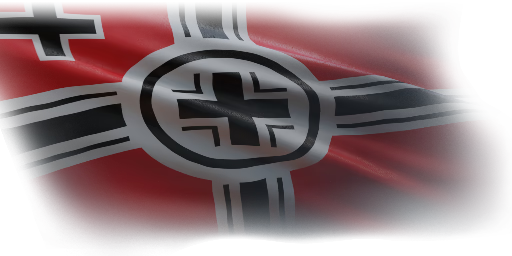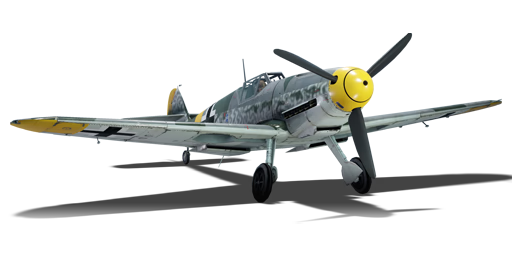



Dogfights over the English channel showed the Spitfire Mk. V outperforming the Bf 109 E at the time and led to the Bf 109 F series. The Bf 109 F "Franz" series was a significant improvement over the Bf 109 E. It featured the DB 601 E engine, which boasted an over 25% increase in power. The F-4 was also fitted with the MG 151/20 cannon, which was a 20 mm cannon that could fire a variety of shells. It was mounted through the propeller hub, so it didn't need to be synchronized with the prop, which would've most likely lowered the rate of fire. Over 1,800 F-4s were built, ranging from the regular fighter version (F-4) to reconnaissance variants like the F-4/R3. The Bf 109 F-4 also largely solved the issue with the Spitfire Mk. V having a performance edge over 109s.
The Bf 109 F-4 has been in the game since the start of the Open Beta Test prior to Update 1.27. Much like in real life, the F-4 is a substantial improvement over previous 109s. The DB 601 E engine greatly increases the 109 F-4's capability as a fighter and can easily out-climb many American aircraft, like the P-47D-25 and P-51D-5. However, it is still quite a draggy aircraft, and the previously mentioned fighters can easily keep up with it. Furthermore, the MG 151 cannon has relatively low velocity, which can be difficult for new players to aim and lead well with. Although the DB 601 E provides a substantial power increase, it still has the same overheating issue as earlier Franz variants. Constant WEP usage is not recommended, as it can greatly heat-soak the engine and make it difficult to utilize maximum power after some time. Manual engine control is highly advised.
flaps
flaps
flaps
brake
| Belt | Belt filling | Armor penetration (mm) at a distance: | |||||
|---|---|---|---|---|---|---|---|
| 10 m | 100 m | 500 m | 1000 m | 1500 m | 2000 m | ||
| IT/IT/APHE/HEI | 21 | 19 | 8 | 3 | 1 | 1 | |
| IT/HEI/HEI/AP-I | 27 | 24 | 14 | 7 | 3 | 2 | |
| AP-I/HEI/HEI/HEI/HEI/IT | 27 | 24 | 14 | 7 | 3 | 2 | |
| APHE/APHE/APHE/IT | 21 | 19 | 8 | 3 | 1 | 1 | |
| FI-T/FI-T/FI-T/IT/IT | 21 | 19 | 8 | 3 | 1 | 1 | |
| HEI/HEI/HEI/APHE/AP-I | 27 | 24 | 14 | 7 | 3 | 2 | |
| Belt | Belt filling | Armor penetration (mm) at a distance: | |||||
|---|---|---|---|---|---|---|---|
| 10 m | 100 m | 500 m | 1000 m | 1500 m | 2000 m | ||
| AP-T/AP-I/AI | 9 | 8 | 6 | 3 | 0 | 0 | |
| AP-T/AP/AI/AP-I | 13 | 12 | 7 | 3 | 2 | 0 | |
| AP-T | 9 | 8 | 6 | 3 | 0 | 0 | |
| AI/AP/AP/AP/AI | 13 | 12 | 7 | 3 | 2 | 0 | |












Flight performance | |
|---|---|
Survivability |
|---|
Weaponry | ||
|---|---|---|